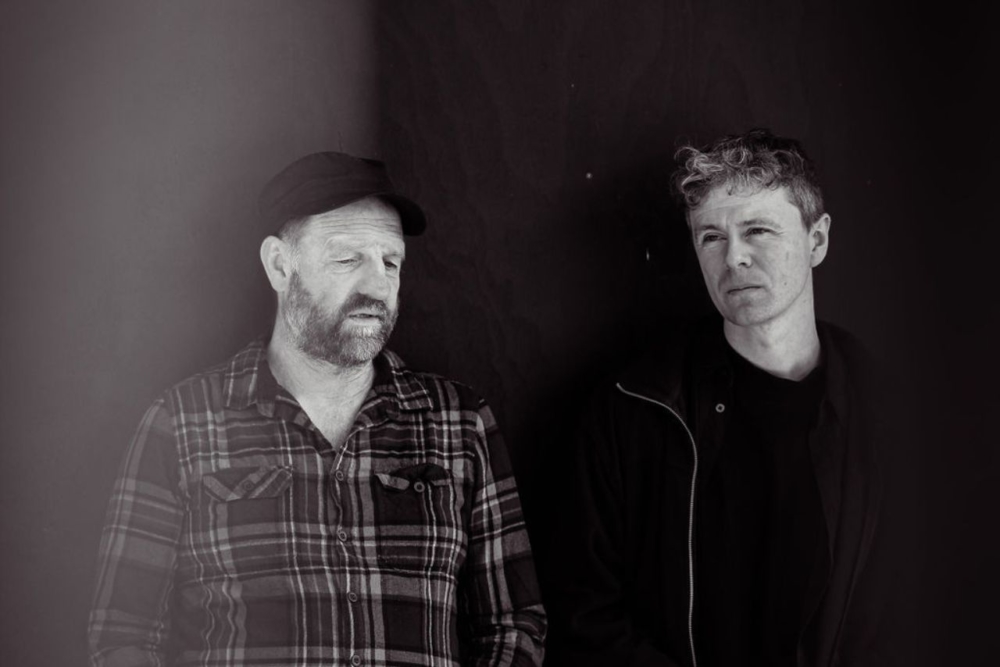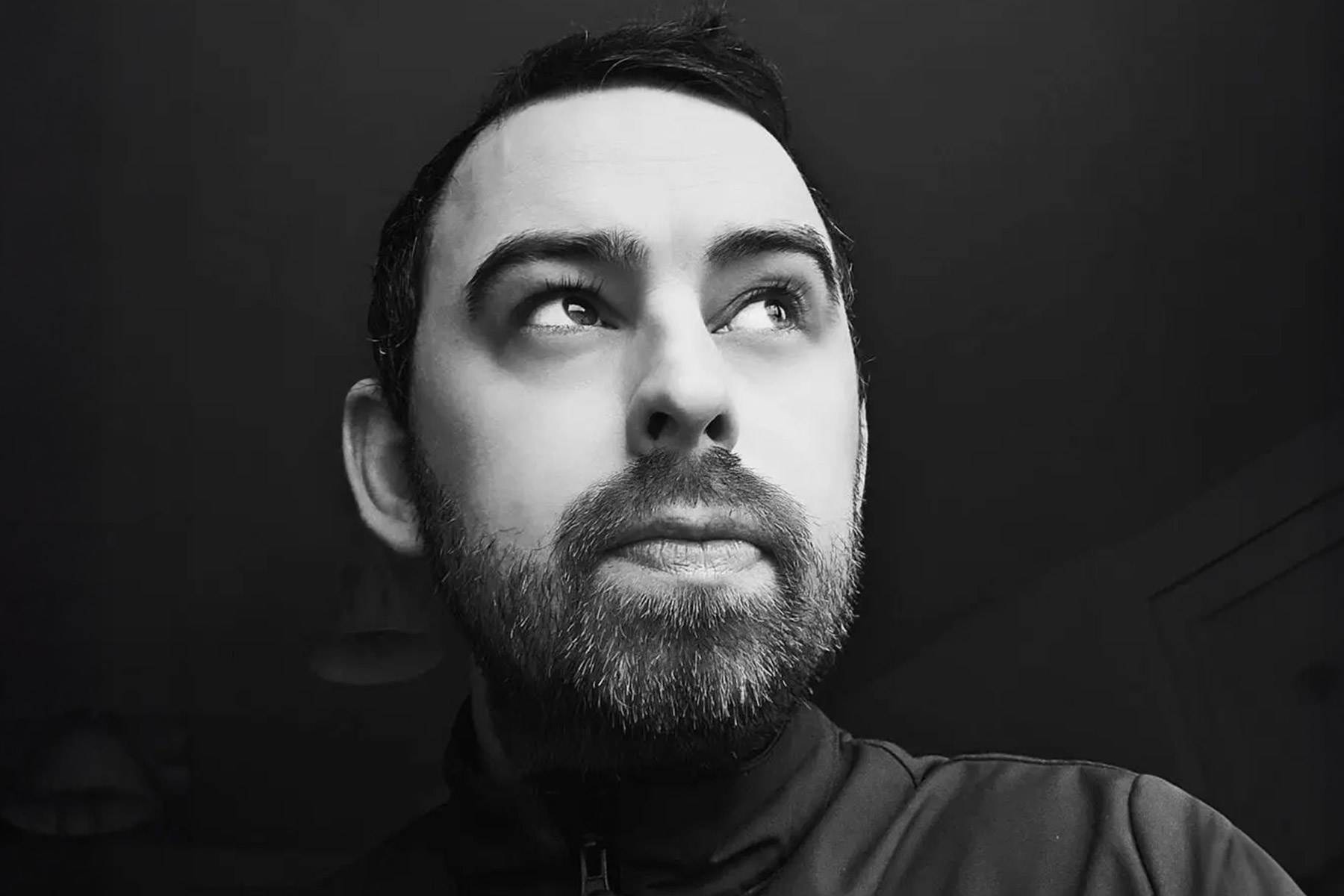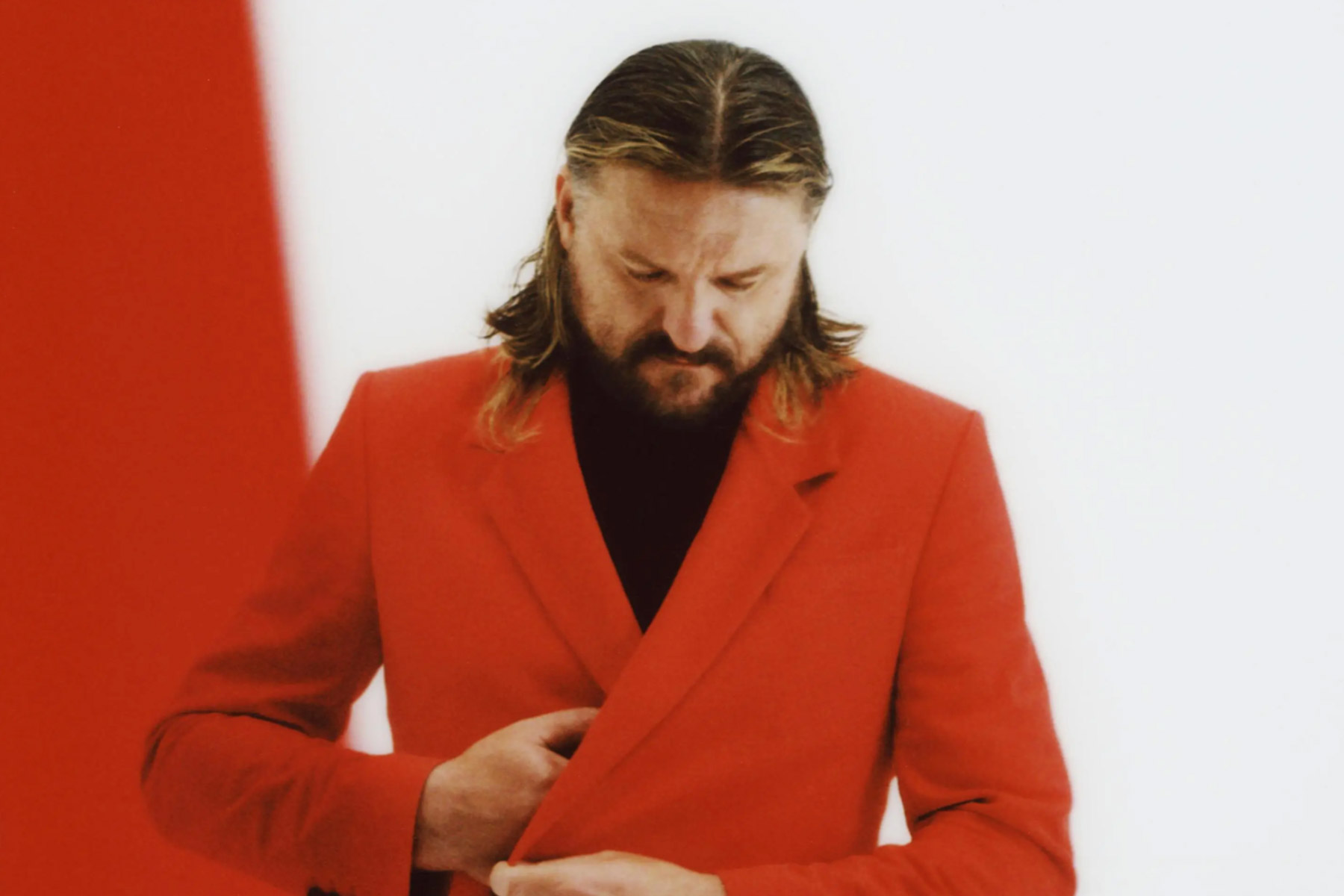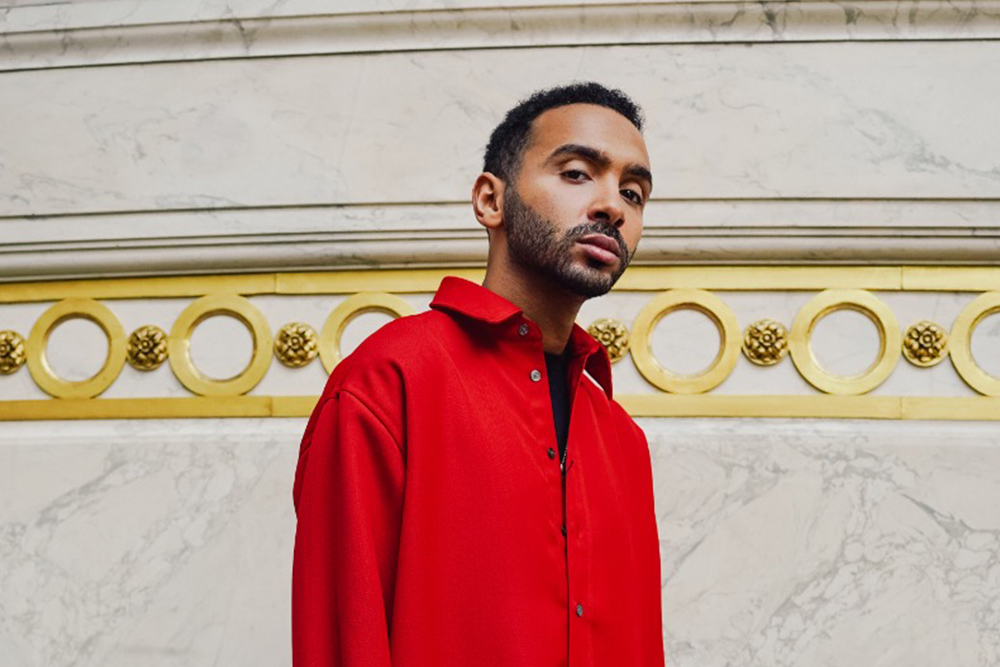On ‘Ghost Notes’, John Matthias and Jay Auborn’s latest album, the British duo take their experiments with sound to new levels, catapulting their work into unexplored territories of human-robotic collaboration.
Combining his expertise and interests in science and sound, the composer, violinist, and physicist, John Matthias is known for blending tradition and futurism in his music. His work has taken the form of pioneering research on Neuronal Music Technology as well as 4 acclaimed studio albums on Ninja Tune and numerous collaborations with renowned artists including Radiohead, Matthew Herbert, and Coldcut.
Jay Auborn’s assiduous work in musical engineering, which takes sound as yet another malleable material to be played with, has made him into a sought-after musician, record producer, and sound artist working on everything from large-scale sound installations to film music. Between their shared passions and complementary skills, the musicians found a unique and undeniably bold synergy.
As we gear up towards the release of ‘Ghost Notes’ this April 7th with the drop of the official music video for its first single, John Matthias & Jay Aubron invite EG into the studio for 5 inspirational studio tips.
1. “Ideas are one thing and what happens is another” – John Cage
Jay: I keep this in mind when in the studio, it aligns you with what is happening rather than what you hoped would happen. Happy accidents are a gift and if one arrives, embrace it.
John: Be prepared to be agile and change ideas quickly.
The Cage quote is interesting -he always said “you do what must be done”, and that really flows into our studio process.
2. Decide on the sound world
John: Decide on what the sound world for the session is and mic up all of the instruments in advance of playing, ready to arm ‘record’ quickly.
Jay: This is about limits, and feeling excited by the process. We never keep anything plugged in from session to session or project to project. We want the setup (mics, instruments, effects) and creative process to be different each time, so once it’s done it’s done, no going back over things. This creates some limits. Recording is like taking a snapshot, not chasing perfection for us.
3. Listen to your collaborator(s)
John: Try not to take things personally when in a recording session. It’s music. It’s work. Talk about the context of the session and what it’s for and what you want to get out of it in detail beforehand
Jay: I think you get one listen before your mind gets overly involved and makes things something they aren’t. Working with other people allows you to keep more perspective over time, and not lose sight of what the thing is. Listening and trusting one another changes how you feel about the music and therefore how it sounds. We allow space for one another’s ideas to co-exist, sometimes complementary ideas and sometimes not, it makes the sound interesting and richer emotionally.
4. Creative discipline
Jay: Never think about what you are working on unless you are working on it. I learned this from the American writer Ernest Hemingway, a master of creative discipline. When away from the studio, never make notes, write down ideas, or even think about what you’ll do next on a track unless you are in the room doing it. Otherwise, your mind gets hold of it and makes it something it isn’t, and then, when you sit down again to work on it for real it won’t be the version you made it to be in your head. This has helped me have a more healthy, more productive relationship with sound and music.
John: I think Jay is right -it’s very much about creating the right environment for the ‘moment’. In the 1990s I played in a band, a rock band that over-rehearsed before recording, leaving little to create in the studio except to ‘record’ -pop music had become dead and the studio devoid of creativity and invention -what we do now is the antithesis of this.
5. Electronic and acoustic combined
Jay: We normally start with an acoustic instrument. Capture a live performance that we feel is engaging in some way. Something entertaining to listen to. We build from this starting point. Sometimes the original element is eventually removed or manipulated beyond recognition. We might take a small section of improvisation on the violin by John and then use the computer to adapt it and process it over time so that it is electronically altered, with the listener along for the journey.
In practical terms, this might be: record some violin, and run it via Melodyne but not for tuning but to get a midi version of the performance. Then lay the midi in along with the violin recording and send it to some synths. It’s likely the pitch to midi process won’t be quite right but these errors are mostly great. Then mess with the synth sound whilst recording it along with the violin. Process the two together via some plugins like distortion, reverb, or whatever, trying to glue them together into one new thing. Focus on big-picture movements over time, not little loops. We use Ableton mostly for recording and sound mangling then mix in Pro Tools. We switch tools so we can separate the creative and technical processes.
John: The studio process, therefore, extends the acoustic instruments -they become much more than the sound creators that they are in the world and can be altered with plug-ins such as the neuro granular sampler, which renders indeterminism in the music by triggering grains of sound from them at unpredictable, yet not random times. The output can become much more than the input and therefore is playing with time and the moment -you need the moment to make any magic happen but you benefit from the editing time to extend those moments and color them.
John Matthias & Jay Aubron’s ‘Ghost Notes’ will be available via Cognitive Shift on April 7th.
Follow John Matthias & Jay Aubron: Instagram | Facebook | Soundcloud | Spotify








